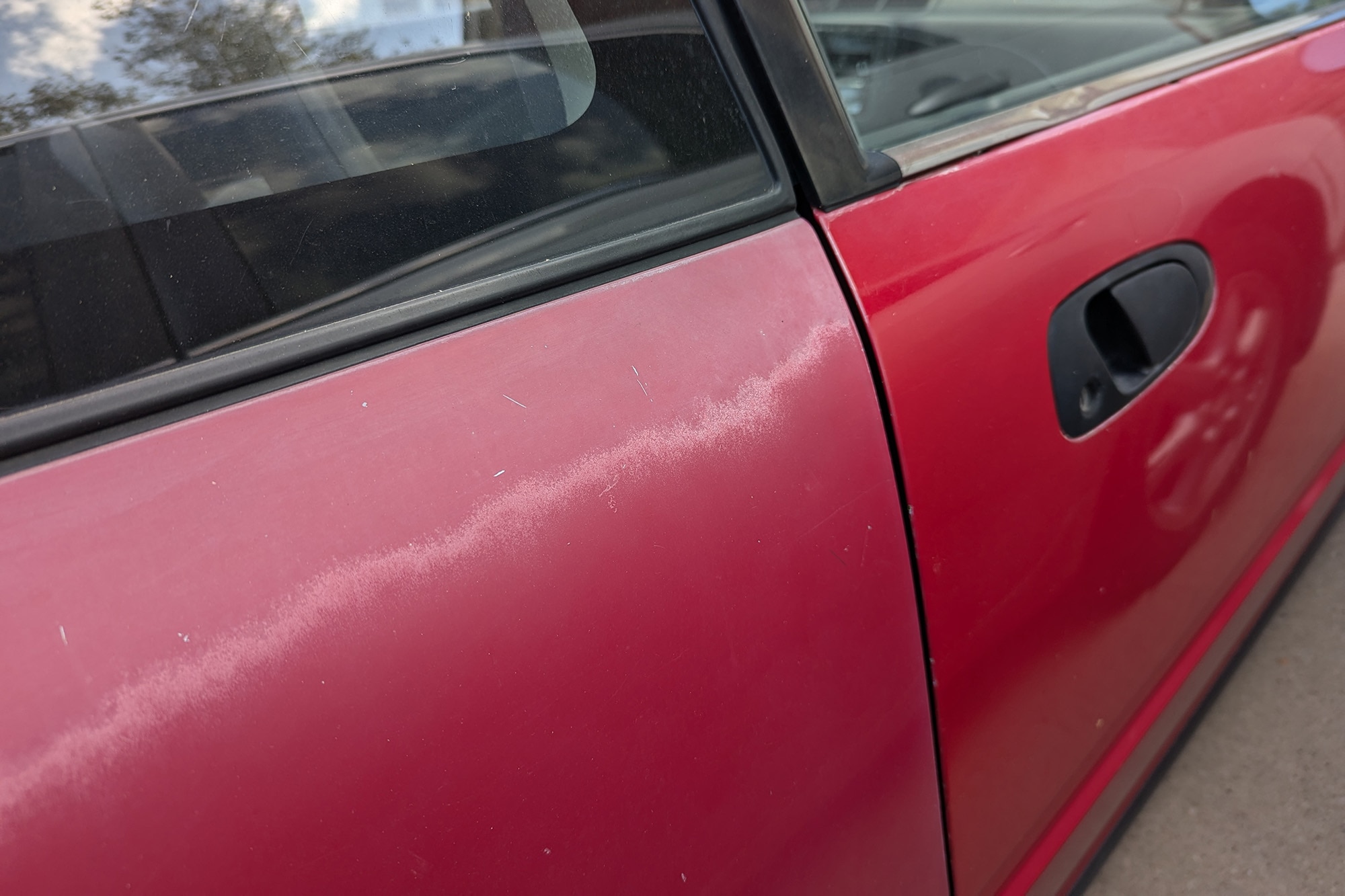Why Does Car Paint Fade?
Find out what dulls your car's finish and how to make it shine again.
 Austin Lott | Capital One
Austin Lott | Capital One
Over time, automotive paint finishes take a beating. Colors lose vibrance, gloss is reduced, and the paint starts to look better wet than dry. There's no single reason your car's paint degrades; it can feel like everything is out to get it. But today's automotive paints are durable, and restoring the gleam is possible.
Why Your Car's Paint Fades
The sun's ultraviolet and infrared rays cause paint damage. Acid rain leaves a corrosive film contaminated by oils and automotive fluids. Other shine dullers can include physical scratches from fine abrasive particles, bird droppings, and even bugs.
Scrubbing too hard, car-wash brushes, and dirty towels act like sandpaper. Some automotive colors, especially reds, have a reputation for quickly degrading. This has been true historically because of the high-energy light wavelengths red pigments absorb, but it's minimized for modern paints.
What's Happening Technically
Light, heat, environment, and simple daily driving play a role in fading automotive paint. According to paint maker BASF, light exposure causes photodegradation, heat causes thermal degradation, and bacteria and fungi can cause biodegradation.
UV and infrared rays affect the strength of chemical bonds, causing visible color changes. Most paint jobs have a clear-coat layer that can oxidize from infrared radiation. When that happens, fading, hazing, and surface roughness are typically the result.
That said, automotive paint today has significantly improved from the early days of cars. Some clear-coats, for example, incorporate stabilizers with UV absorbers to provide more protection from sun damage.
How to Minimize Environmental Damage
Park your vehicle out of direct sunlight as much as possible to minimize sun damage and degradation caused by heat. Keep paint clean and protected by regularly washing your vehicle and removing any stuck-on debris promptly. Finish with a wax or ceramic coating. Be aware, however, that coatings don't necessarily block UV as much as they provide a sacrificial layer to enhance durability, gloss, and resilience.
If you want to get deeper into the process, online car-detailing communities can offer advice, and if you need help with the job, a good local detailing shop is often a helpful first step.
Existing Damage May Not Be Permanent
Fixing an already-faded vehicle takes work, but the results can be impressive. You could try the process of smoothing the paint's surface with a clay bar, then using a polishing compound or trying a multistage wet-sanding process, as such steps can remove haze or chalkiness. The final step is generally to buff with clean pads then apply a good wax or coating and renew as needed.
Auto detailers and body shops can be excellent places to get assistance if you're in doubt about any part of the tools or process.
Written by humans.
Edited by humans.
 Dan Roth
Dan RothDan Roth has spent nearly 20 years as an automotive journalist. His work has appeared in major enthusiast and industry publications, and his industry experience includes several years in communications for a global automaker. Dan's non-automotive pursuits include collecting experiences with his family, drinking good coffee, and playing bad guitar.
Related articles
View more related articles